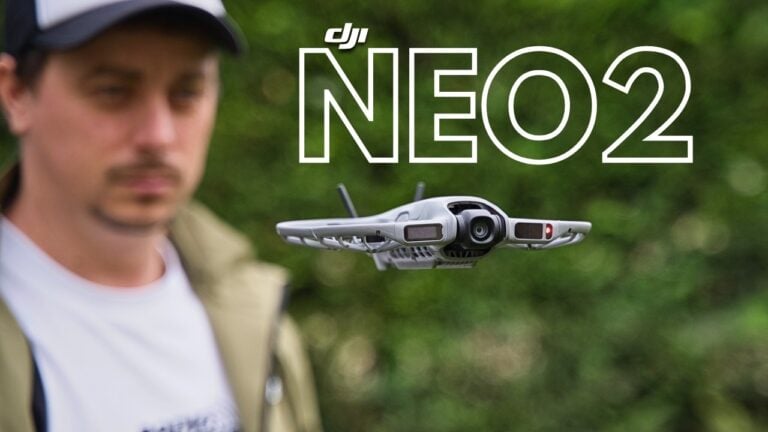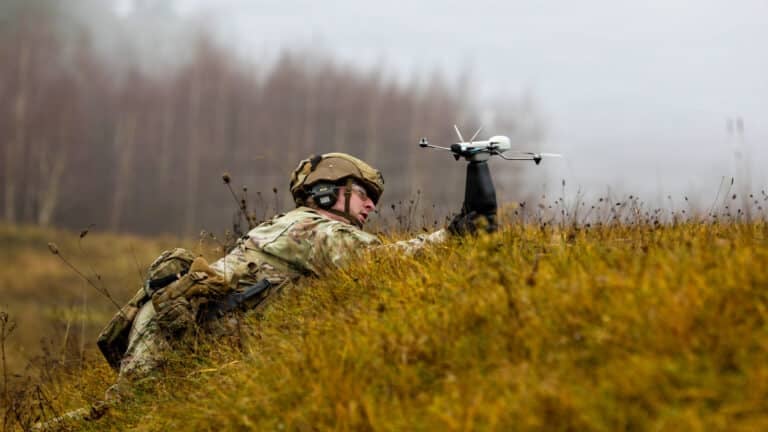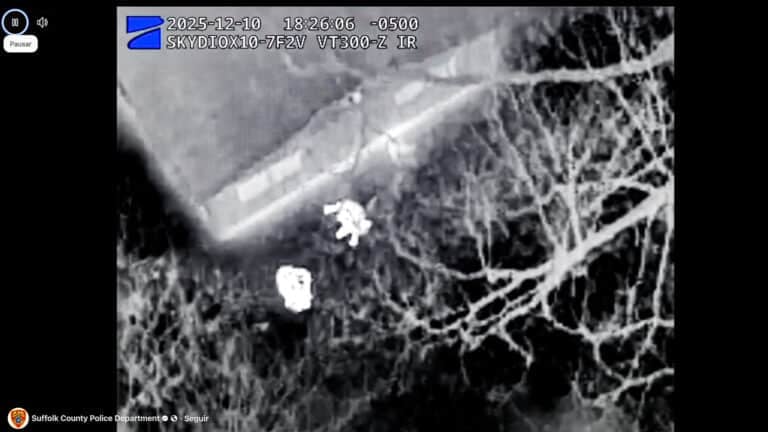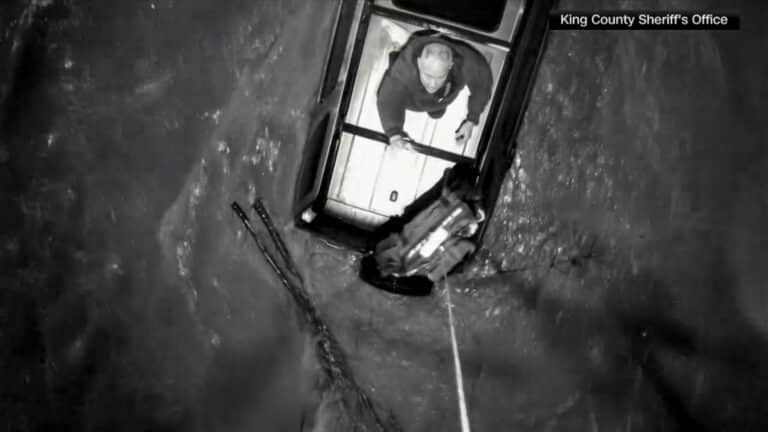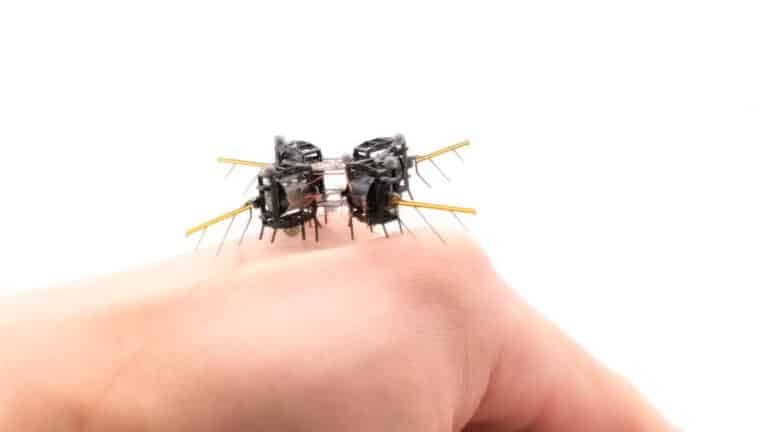Large Remotely Piloted Experimental Aircraft Crash Sparks 83-Acre Colorado Wildfire as Lithium Batteries Intensify Blaze

Amazon Drone Deals: DJI Mini 5 Pro Fly More Combo with DJI RC2 now for $1,099!
An experimental remote-controlled aircraft crashed near Calhan, Colorado on October 30, igniting an 83-acre wildfire that forced evacuations and highlighted the growing fire risks posed by lithium battery-powered drones in wildfire-prone regions.
The 6-foot wingspan aircraft, operated by a commercial company conducting experimental aircraft testing in eastern El Paso County, crashed around 12:30 PM near Big Springs Road between Yoder and Calhan—approximately 35 miles east of Colorado Springs. The crash sparked a rapidly spreading wildland fire that moved toward multiple structures in the sparsely populated area.
According to the Tri-County Volunteer Fire Department, the experimental aircraft wasn’t from a hobbyist but rather a nearby company that conducts experimental aircraft testing. A spokesperson for the department explained that lithium batteries in the plane significantly intensified the fire, creating challenges for responding crews.
Multi-Agency Response Contains Fire Within Hour
The incident prompted mandatory evacuation orders for residents living on Big Springs Road, east of Calhan Highway, west of Lauppe Road, and north of Highway 94. Multiple fire departments responded from across Southern Colorado, including units from Ellicott, Tri-County, Limon, Calhan, Simla, Falcon, Cimmaron Hills, Hanover, and Fountain.
Firefighters achieved 100% containment by approximately 1:40 PM—just over an hour after the blaze started—though not before the fire consumed one small outbuilding. The El Paso County Sheriff’s Office downgraded the mandatory evacuation to a pre-evacuation warning at 1:00 PM as crews gained control. No injuries were reported.
Kurt Smith, a public information officer with the Sheriff’s Office, noted that in the fall, “the ground tends to dry out, and on a high-wind day, these fires can quickly get out of control.” The Sheriff’s Office investigation determined the crash appeared accidental rather than intentional or reckless.
Lithium Battery Fire Risk in Experimental Aviation
The incident underscores a growing concern about lithium battery fire risks in unmanned aircraft systems. Lithium-ion and lithium-polymer batteries can enter thermal runaway when damaged in a crash, releasing intense heat and potentially igniting surrounding vegetation—especially problematic during Colorado’s late fall fire season when conditions are dry and windy.
The FAA has documented increasing incidents involving lithium battery fires in aviation contexts, with the agency maintaining comprehensive safety resources on proper handling, storage, and transportation of devices containing these power sources. The high energy density that makes lithium batteries ideal for powering drones also makes them susceptible to violent thermal reactions when cells are damaged or punctured.
The commercial testing company’s name has not been publicly disclosed, though KRDO reports local authorities continue investigating the specific circumstances of the crash.
DroneXL’s Take
This incident presents an ironic twist in drone technology’s relationship with wildfires. DroneXL has extensively covered how unmanned aircraft are revolutionizing wildfire response—from Seneca’s $60 million autonomous firefighting drone system to Montana firefighters using thermal drones to identify hotspots through thick smoke. Yet this Colorado incident demonstrates that the same lithium battery technology powering these firefighting solutions can also become an ignition source.
The contrast is stark: just months after reporting on unauthorized drones grounding firefighting aircraft during LA wildfires, we now see experimental drones directly causing fires. For our sister site EVXL, lithium battery fire risks in electric vehicles remain an ongoing coverage area, from Boston highway EV fires to thermal management challenges across the industry.
As experimental aviation pushes boundaries with increasingly powerful battery systems, the incident raises questions about safety protocols for testing in fire-prone regions during high-risk seasons. Should experimental drone operations face seasonal restrictions similar to recreational flying during extreme fire danger? The quick containment by local fire departments prevented a potential disaster, but the 83-acre burn serves as a reminder that innovation carries risks—especially when conducted in Colorado’s volatile fall fire conditions.
What do you think? Share your thoughts in the comments below.
Discover more from DroneXL.co
Subscribe to get the latest posts sent to your email.
Check out our Classic Line of T-Shirts, Polos, Hoodies and more in our new store today!

MAKE YOUR VOICE HEARD
Proposed legislation threatens your ability to use drones for fun, work, and safety. The Drone Advocacy Alliance is fighting to ensure your voice is heard in these critical policy discussions.Join us and tell your elected officials to protect your right to fly.
Get your Part 107 Certificate
Pass the Part 107 test and take to the skies with the Pilot Institute. We have helped thousands of people become airplane and commercial drone pilots. Our courses are designed by industry experts to help you pass FAA tests and achieve your dreams.

Copyright © DroneXL.co 2025. All rights reserved. The content, images, and intellectual property on this website are protected by copyright law. Reproduction or distribution of any material without prior written permission from DroneXL.co is strictly prohibited. For permissions and inquiries, please contact us first. DroneXL.co is a proud partner of the Drone Advocacy Alliance. Be sure to check out DroneXL's sister site, EVXL.co, for all the latest news on electric vehicles.
FTC: DroneXL.co is an Amazon Associate and uses affiliate links that can generate income from qualifying purchases. We do not sell, share, rent out, or spam your email.





